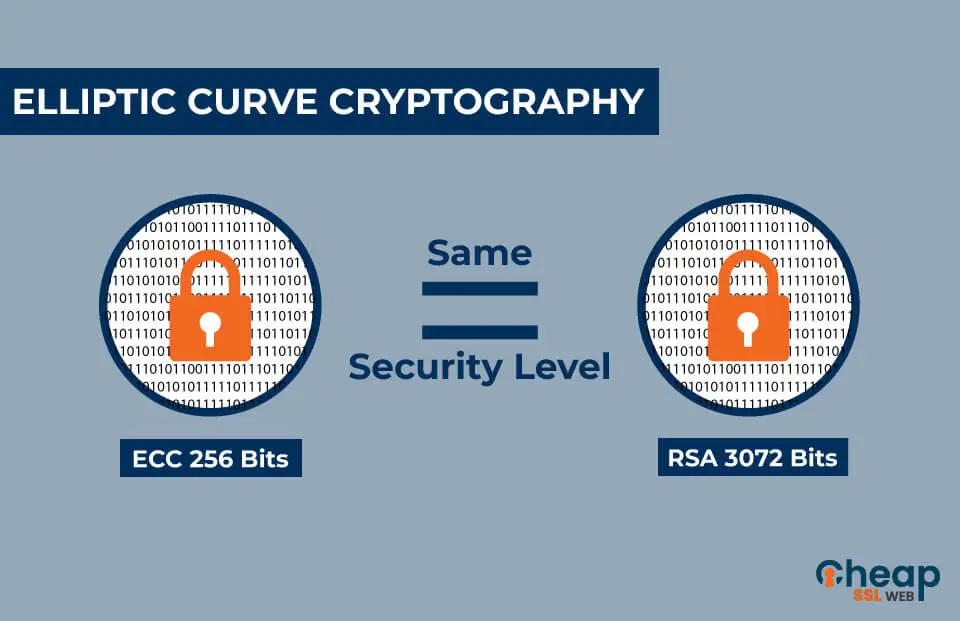The Enigma of Monoalphabetic Cipher: An Exploration of its Historical and Contemporary Relevance
In the vast and intricate world of cryptography, the monoalphabetic cipher holds a profound place as one of the earliest and most straightforward methods of encoding messages. Emerging from the necessity to communicate securely, the monoalphabetic cipher has traversed through centuries, adapting and evolving with the passage of time. In this exploration, we delve into the historical roots, mechanisms, and applications of this fascinating cipher, while also highlighting its relevance in today's digital age.
Understanding the Monoalphabetic Cipher
The monoalphabetic cipher is a type of substitution cipher where each letter in the plain text is replaced with a corresponding letter from a fixed ciphertext alphabet. This substitution remains consistent throughout the communication, offering a single mapping that encrypts the original message. Despite its simplicity, the monoalphabetic cipher once posed a formidable challenge to those attempting to intercept and interpret confidential communications.
One of the most renowned variants of the monoalphabetic cipher is the Caesar cipher, named after the Roman general Julius Caesar, who purportedly utilized it for his personal correspondence. By shifting the alphabet by a fixed number of positions, the message was transformed into an unreadable format without knowledge of the shift key. For example, with a shift of three, the text "HELLO" would be encoded as "KHOOR." The straightforward nature of the Caesar cipher embodies the essence of monoalphabetic substitution, laying the foundation for the complex techniques that followed.
Historical Significance
The monoalphabetic cipher's allure lies in its rich historical narrative. Its roots can be traced back to ancient civilizations, where the need for secrecy and discretion in communication was paramount. Early instances of monoalphabetic ciphers appeared in Egyptian and Mesopotamian cultures, demonstrating their longstanding utility.
In medieval times, European scholars and cryptographers further refined these ciphers, recognizing their potential in diplomatic and military contexts. One notable figure was the Arab mathematician Al-Kindi, who, in the 9th century, devised a method known as frequency analysis. This groundbreaking technique allowed cryptanalysts to break monoalphabetic ciphers by analyzing the frequency of letters in the ciphertext, capitalizing on the inherent patterns of natural languages.
Despite their historical utility, monoalphabetic ciphers gradually became vulnerable as cryptographic methods advanced. The development of polyalphabetic ciphers and more sophisticated cryptographic systems marked the decline of monoalphabetic ciphers in secure communications. Nevertheless, the monoalphabetic cipher paved the way for future innovations, serving as a blueprint for subsequent cryptographic endeavors.
The Mechanics of Encryption
The simplicity of the monoalphabetic cipher lies in its sheer mechanical process. To encrypt a message, one begins by establishing a fixed substitution key—a correspondence between the letters of the plain text alphabet and a scrambled version of that alphabet. This key is then applied consistently to translate each letter in the original message into its encrypted counterpart.
Consider the basic Caesar cipher as an illustrative example. By employing a shift of four, the plain text alphabet becomes:
Plain: ABCDEFGHIJKLMNOPQRSTUVWXYZ
Cipher: EFGHIJKLMNOPQRSTUVWXYZABCD
Using this key, the message "SECURE" translates into "WIGYVI." The level of security hinges upon the secrecy of the substitution key. Without knowledge of the key, brute force methods or the application of frequency analysis were typically required to decipher the message.
While the monoalphabetic cipher might seem rudimentary today, it was an ingenious solution during its heyday, balancing ease of implementation with a reasonable level of secrecy, especially when utilized in an era with limited means of decryption.
Contemporary Relevance
In the context of today's digital world, monoalphabetic ciphers are no longer used for securing sensitive information due to their vulnerability to elementary cryptanalysis techniques. However, their significance endures, not only for their historical contributions to cryptography but also as a didactic tool for understanding fundamental cryptographic concepts.
In educational settings, monoalphabetic ciphers serve as an entry point for students venturing into the field of cryptography. Their straightforward nature simplifies the introduction of basic principles such as encryption, decryption, and the significance of keys. By grappling with these ciphers, learners gain an insight into how real-world encryption algorithms operate on a conceptual level.
Furthermore, the legacy of monoalphabetic ciphers echoes through modern cryptographic systems, underscoring the importance of key management and secure communication. While the complexity and sophistication of contemporary cryptography surpasses the simplicity of monoalphabetic ciphers, the underlying principles of maintaining confidentiality and verifying authenticity remain unchanged.
In the subsequent sections of this article, we will explore the adaptations and variations of monoalphabetic ciphers and examine their influence on the security protocols that shape our digital interactions today. As the field of cryptography continues to evolve, the monoalphabetic cipher stands as a testament to the enduring human quest for safeguarding communication across time and space.
Variations and Adaptations of Monoalphabetic Ciphers
While the basic monoalphabetic cipher, such as the Caesar cipher, is straightforward, numerous variations and adaptations have emerged over the centuries. These variants sought to enhance the cipher's complexity and resistance against basic cryptanalysis techniques.
One such adaptation is the Keyword Cipher. In this variant, a keyword is chosen, and the alphabet is written down, excluding the letters of the keyword upon their first appearance. The keyword itself serves as the beginning part of the new alphabet. For example, using the keyword "SECRET," the substitution alphabet would begin with "SECR T," followed by the remaining letters of the alphabet in their usual sequence, omitting those already present in the keyword. This method allows for a more personalized cipher while still suffering from potential frequency analysis vulnerabilities.
Another notable variant is the Atbash Cipher. Although technically a substitution cipher, it doesn't rely on a shift or keyword. Instead, it uses a method of reversing the alphabet, where 'A' becomes 'Z,' 'B' turns into 'Y,' and so forth. Having roots in the Hebrew language, the Atbash Cipher was primarily used in ancient Hebrew script but has seen intermittent use in various contexts throughout history.
The Playfair Cipher represents a more sophisticated take on monoalphabetic substitution, introduced by Charles Wheatstone in the mid-19th century but named after his friend Lord Playfair. The cipher uses a 5x5 grid filled with a keyword and the remaining letters of the alphabet (combining 'I' and 'J' to account for the 25 slots). Instead of swapping individual letters, it encrypts pairs of letters, thus providing a level of complexity beyond standard monoalphabetic ciphers.
Impact on Cryptographic Evolution
The multiple iterations and enhancements of monoalphabetic ciphers illustrate the dynamic nature of cryptographic development. Each variant added a layer of complexity, making the ciphers harder to break with each advancement in adversarial techniques. This constant interplay of cryptography and cryptanalysis drove the evolution of more secure methods, bridging the gap towards polyalphabetic ciphers and eventually, modern cryptographic protocols.
One significant impact of monoalphabetic ciphers was the spur they provided to the practice of cryptanalysis. With the advent of frequency analysis, cryptanalysts gained powerful tools to dissect and decode these ciphers. This technique was notably harnessed during the Renaissance and became a substantive challenge for those seeking to secure communications, thereby highlighting the inherent weaknesses in static substitution systems.
As the use and study of monoalphabetic ciphers expanded, they laid foundational groundwork for complex cryptography. The limitations exposed by frequency analysis encouraged the shift toward polyalphabetic ciphers, where the letter pairings varied throughout the text, reducing the predictability and patterns that made traditional monoalphabetic ciphers vulnerable. The Vigenère cipher, for example, employed multiple Caesar ciphers based on a keyword, adding a powerful layer of security previously absent.
Modern Cryptographic Lessons
Despite their obsolescence in securing modern communications, monoalphabetic ciphers continue to impart essential lessons for the field of cryptography. In particular, they remind practitioners and enthusiasts alike of the importance of key security and algorithmic integrity. Even the most complex algorithm can be compromised if the key is inadequately protected or if patterns can be discerned from the cipher text.
In the modern context, cryptographic integrity encompasses ensuring that encryption schemes remain robust against not only traditional methods like frequency analysis but also advanced cryptanalytic tactics, including differential and linear cryptanalysis. Today's cryptographers must account for a broad array of attack vectors, integrating principles of randomness, key length, and entropy—concepts foreshadowed in the simplistic breakdowns of monoalphabetic systems.
Furthermore, the historical progression from monoalphabetic to more sophisticated systems mirrors the current push towards encryption technologies that resist quantum computing threats. Quantum-resistant algorithms represent the next evolutionary step, much as Vigenère and similar systems represented an advancement from monoalphabetic precursors.
Educational and Practical Value
While the practical use of monoalphabetic ciphers in serious encryption is now largely ceremonial, they remain pivotal in education. They serve as an excellent didactic tool for introducing fundamental cryptographic concepts to novices. By actively encoding and decoding messages, students gain hands-on experience, helping them understand core principles.
Moreover, the deciphered historical messages encrypted with these ciphers offer intriguing insights into historical affairs, illustrating cryptography's real-world applications through centuries. From diplomatic letters of medieval Europe to encoded military orders, the exploration of these ciphers provides invaluable perspective on human history and communication.
In conclusion, while the monoalphabetic cipher may no longer hold its former infallible status, the ramifications of its existence echo as both a stepping stone and a cautionary tale in the rich narrative of cryptography. Its story is one of ingenuity, refinement, and, ultimately, transcendence, as it paved the way for more advanced encryption methods still in use today. In embracing the simplicity and complexity of the monoalphabetic cipher, we gain a deeper appreciation for the everlasting quest for secure communication.
Monoalphabetic Ciphers in Popular Culture
Though monoalphabetic ciphers may have been surpassed by more sophisticated cryptographic systems, their simplicity and intrigue have made them a staple in popular culture and media. These ciphers frequently appear in literature, movies, and puzzles, captivating audiences with a nostalgic nod to a bygone era of encryption.
One of the most famous literary examples is Edgar Allan Poe's short story "The Gold-Bug," where a monoalphabetic substitution cipher plays a central role in uncovering a hidden treasure. Poe’s intricate plot and detailed description of cryptanalysis capture the imagination of readers, perfectly illustrating how monoalphabetic ciphers can be employed to weave tales of mystery and adventure.
In films and television, the allure of encrypted messages often finds a place, adding layers of suspense and intrigue. The simplicity of monoalphabetic ciphers allows audiences to engage directly, as they relive the puzzle-solving experience vicariously through characters who crack these codes to advance plots and solve crimes.
Puzzle books and games too have embraced the cipher's appeal. Crossword enthusiasts and puzzle solvers frequently encounter these ciphers, challenging them to decode messages and thereby sharpening their analytical skills. This enduring presence in entertainment underscores the cipher’s capacity to engage the intellect and imagination, fostering a spirit of discovery long after its practical decline.
Challenges and Opportunities in Digital Cryptography
As we navigate through an increasingly digital world, the field of cryptography has had to contend with ever-expanding challenges, inspired in part by the legacy of ciphers like the monoalphabetic model. Modern encryption must not only safeguard information against traditional cryptanalytic approaches but also anticipate vulnerabilities arising from computational advancements, such as the potential decryption powers of quantum computing.
Innovations in cryptographic approaches emphasize strengthening algorithms and incorporating complex keys that benefit from astronomical levels of randomness. These principles of unpredictability are starkly contrasted against the predictability that once plagued monoalphabetic ciphers. Today, the focus is on ensuring that data encryption resists not only the known vulnerabilities but also the potential of future technologies to exploit current weaknesses.
Nevertheless, as computational power grows, so does the opportunity for innovation in encryption. Quantum cryptography, for instance, offers groundbreaking potential by leveraging the principles of quantum mechanics to secure communication channels with unprecedented robustness. The move towards these emerging technologies reflects the same spirit that drove the refinement of monoalphabetic systems in the past—an unwavering pursuit of security and secrecy in communication.
Developments like homomorphic encryption, enabling computations on encrypted data without needing to decrypt it, exemplify the cutting-edge trends redefining cryptography. While vastly more complex than monoalphabetic ciphers, they echo the constant drive towards legacy-inspired ingenuity to address contemporary challenges.
A Look Towards the Future
The journey of cryptography from simple monoalphabetic ciphers to complex modern systems exemplifies a historical continuum characterized by perpetual adaptation. While the early forms of ciphers relied heavily on simplicity and finite patterns, contemporary systems boast algorithmic complexity designed to counter an expansive range of modern and theoretical threats.
Despite their perceived obsolescence, the lessons offered by monoalphabetic ciphers remain relevant. They teach us about the importance of maintaining secrecy, understanding vulnerabilities, and continuously improving upon established systems. In an age where data security and privacy are of paramount concern, these age-old lessons guide the continual refinement of cryptographic methods in our quest to secure the digital landscape.
As we advance further into the 21st century and confront emerging challenges, the foundational principles seen in early cryptographic practices will persist in informing future strategies. They remind cryptographers to balance complexity with usability, ensuring that even the most advanced encryption techniques remain accessible to their intended users.
Whether we consider the allure of these ciphers in culture, their educational value, or their contributions to the evolution of cryptographic practices, the legacy of the monoalphabetic cipher is unequivocal. It is not merely a relic of the past but an enduring symbol of the intricacies of human communication and the unyielding pursuit of cryptographic security.
Ultimately, as cryptography continues to evolve, embracing both historical insights and forward-thinking methodologies will be key. Confronting the dual imperatives of accessibility and security in a world where information is power, the knowledge gleaned from deciphering the monoalphabetic puzzles of the past remains invaluable. Cryptographers today stand on the shoulders of giants, drawing not only from technological advancements but also from profound historical narratives, crafting an unbreakable future of secure communication.













Comments